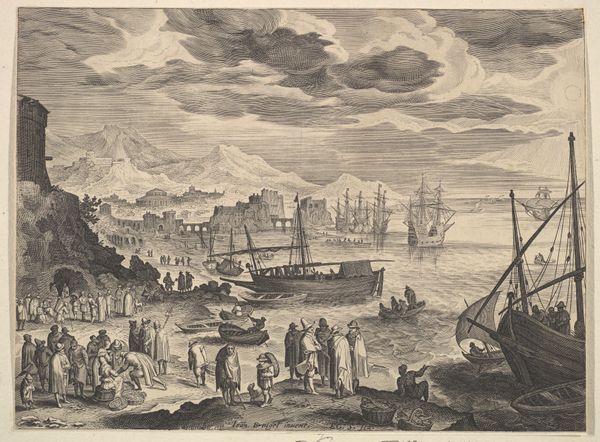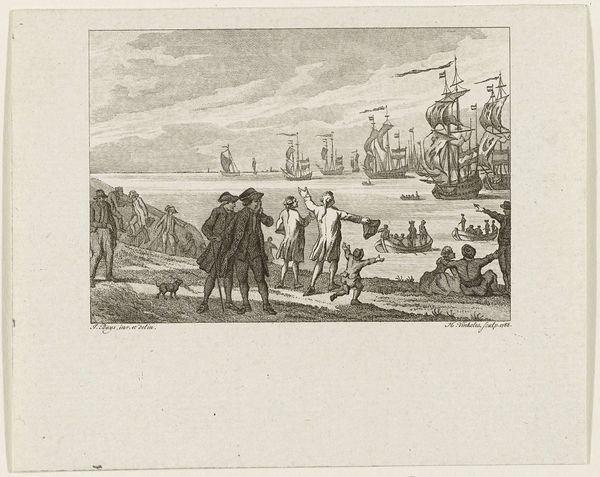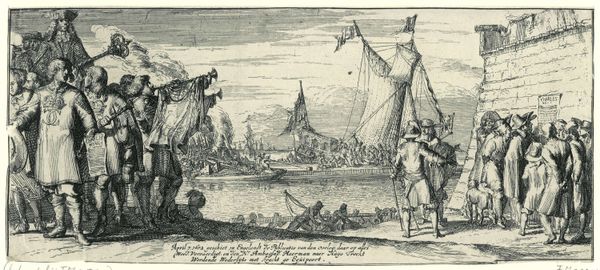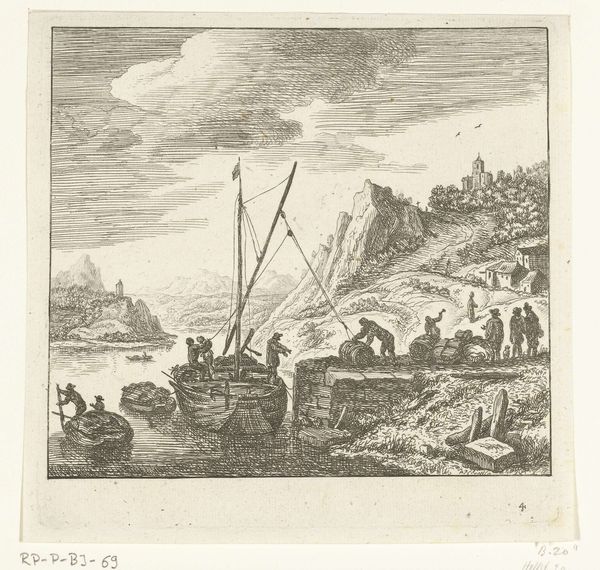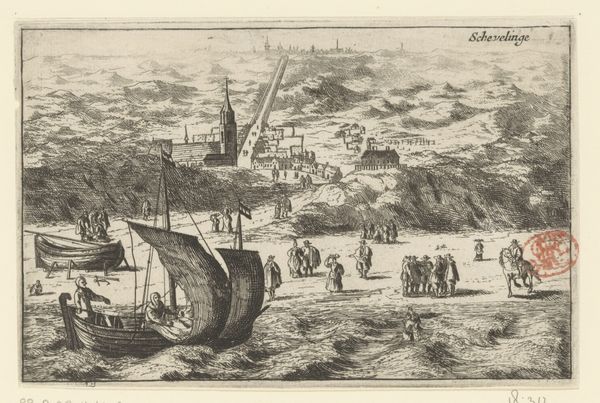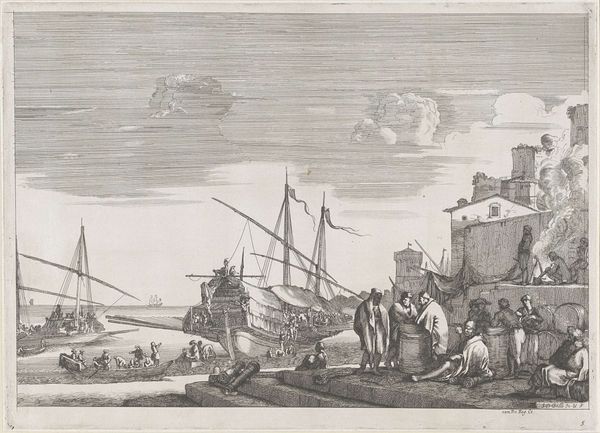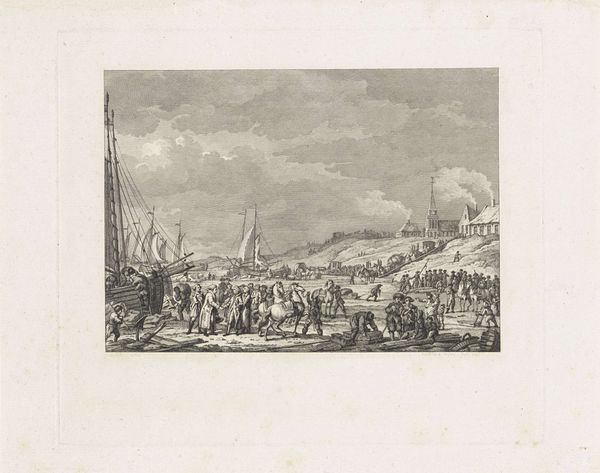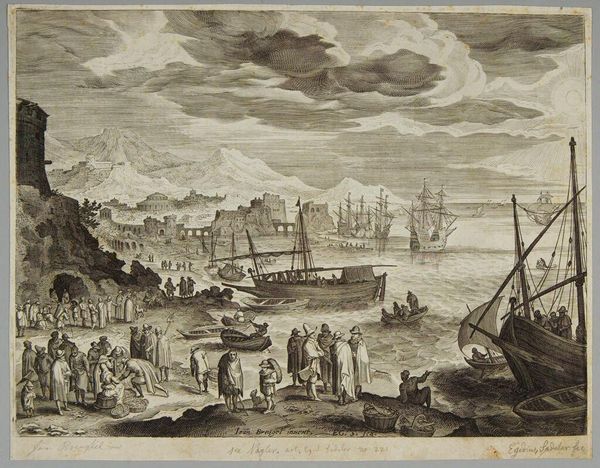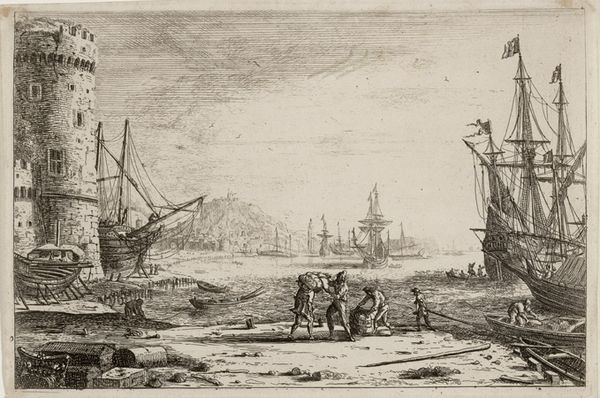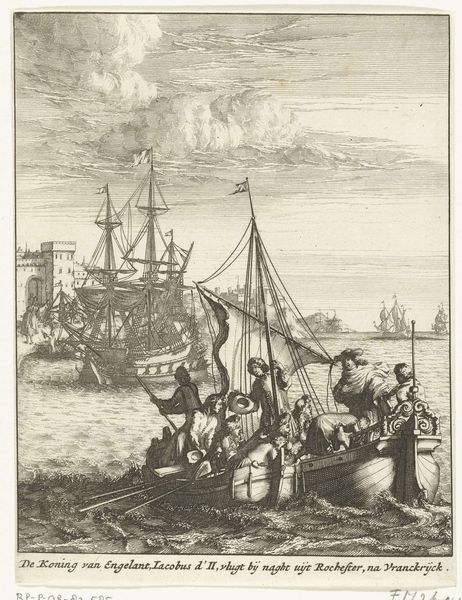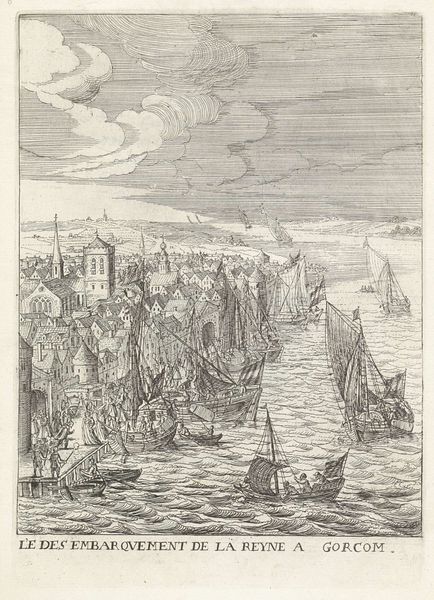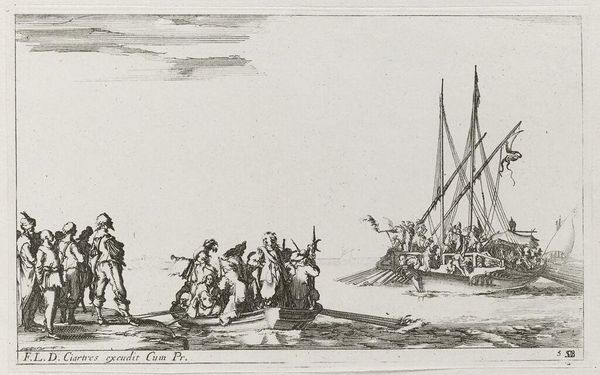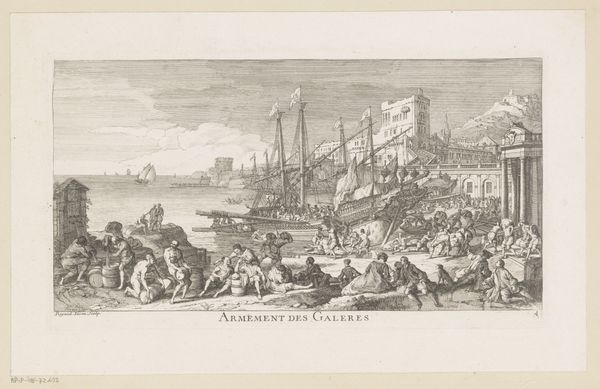
print, engraving
#
baroque
# print
#
landscape
#
cityscape
#
history-painting
#
engraving
Dimensions: height 165 mm, width 216 mm
Copyright: Rijks Museum: Open Domain
This etching depicts William of Orange's landing at Exmouth Bay in November 1688. Produced anonymously, probably in the Netherlands, it captures a pivotal moment in British and Dutch history. The image presents William’s arrival not as an invasion, but as a liberation. We see the orderly disembarkation of troops and supplies, juxtaposed with the enthusiastic welcome from the English populace. It’s a carefully constructed piece of propaganda, designed to legitimise William's claim to the English throne and the 'Glorious Revolution'. Consider the institutional context: printmaking in the Netherlands was a sophisticated industry, and images like these played a crucial role in shaping public opinion and political discourse. Historical accounts, pamphlets, and, of course, prints like this one, all contributed to the narrative surrounding William's actions. To fully understand this image, we need to consult a range of sources: official documents, personal letters, and the records of printmakers and publishers. Only then can we appreciate the full complexity of its meaning and its impact on the social and political landscape of the time.
Comments
No comments
Be the first to comment and join the conversation on the ultimate creative platform.
